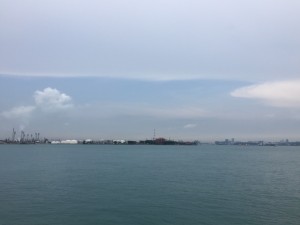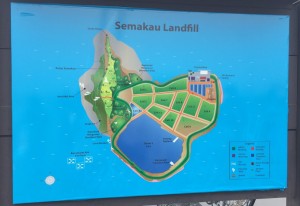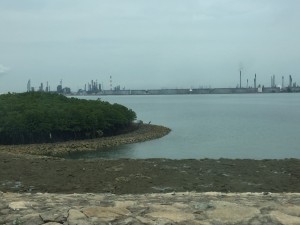Hi there!
Last Sunday, we had a field trip at Pulau Semakau. For some of you guys who do not know, Pulau Semakau is one of the Southern Islands in Singapore and it is Singapore’s first and only landfill.
‘Isn’t Pulau Semakau a garbage dump?’ This is the common response I encounter when I told my friends and family about my field trip. My mother even jokingly asked me if I needed a mask. Well, such comments are understandable.
After all, the term ‘landfill’ doesn’t sound pleasant.
I had a dull impression of the island, thinking that there would not be much greenery. In my mind, I picture mountains of rubbish or ashes with an overpowering stench.
After a 20-minute ferry ride (and dizzy spells), we finally reached Pulau Semakau. The island’s atmosphere was completely different from what I have imagined. The environment was really pleasant and there was no stench at all. That was when I realized that many had the wrong perception of Pulau Semakau. The absent of stench is because garbage was incinerated in the mainland and transported to the landfill as ashes.
The amount of greenery on the island caught my attention. On the map, I was surprised to see mangroves, a coral nursery and an intertidal area consisting of seagrass which I believe will host a wide variety of flora and fauna. Vegetation was also planted on the cells after the ashes was covered with topsoil, contributing to the greenery of the area.
We were lucky enough to experience the rich biodiversity on the island. During the tour, we saw seabirds like heron, a monitor lizard and even sea urchins.
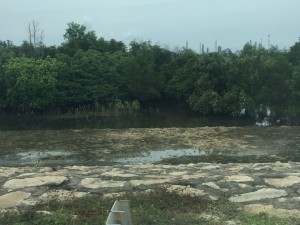 Natural mangroves that was on the original Pulau Semakau before it was connected with Pulau Seking through land reclamation, resulting in the current Pulau Semakau.
Natural mangroves that was on the original Pulau Semakau before it was connected with Pulau Seking through land reclamation, resulting in the current Pulau Semakau.
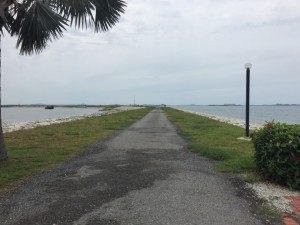 Our guide told us that people used to stargaze here! However, it was stopped possibly because of the phase 2 landfill.
Our guide told us that people used to stargaze here! However, it was stopped possibly because of the phase 2 landfill.
By 2035, the landfill would be filled up. What would happen to the greenery and biodiversity?
‘Singapore’s land use plans beyond 2030 … indicate possible large-scale reclamation at Pulau Semakau’ (Ee, 2014)
It would be devastating if this happens. As shown, the ecosystem on Pulau Semakau is really valuable and it would be unfortunate if lost.
Of course, the main takeaway from this trip would be learning about the waste management process in Singapore. However, it is also interesting to learn about the rich greens in Pulau Semakau that wasn’t well-known by many. By spreading knowledge about the rich biodiversity of Pulau Semakau, it is hoped that the ecosystem in Pulau Semakau would be left untouched and even preserved, just like Chek Jawa that was saved from reclamation due to widespread public opposition.
‘Island Paradise built on a Garbage Dump’ (Châtel, 2007)
Hopefully, Pulau Semakau would continue to be an ‘island paradise’ in the future. This trip was indeed an eye-opener. It would be great if I can travel to Pulau Semakau and explore the island again. 🙂
Cheers!
♣ Johanah
References:
Ee, D. (2014, July 12). Singapore’s seagrass meadows at risk from reclamation. The Straits Times. Retrieved from http://www.straitstimes.com/singapore/environment/singapores-seagrass-meadows-at-risk-from-reclamation
Châtel, F. de (2007, July 26). The island paradise built on a garbage dump. Cable News Network. Retrieved from http://edition.cnn.com/2007/TECH/07/26/ji.semakaulandfill
